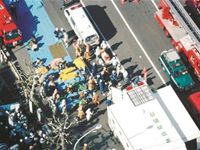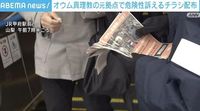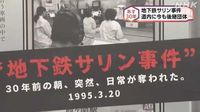March 20, 2025, marks the 30th anniversary of the Tokyo subway sarin attack—an event that shook Japan and the world. The Aum Shinrikyo cult orchestrated this heinous act, releasing sarin gas across five subway lines, resulting in 14 fatalities and approximately 6,300 injuries. April 1995’s chaotic scenes, marked by panicked commuters and overwhelmed emergency services, remain etched in the collective memory of the nation.
On the morning of that fateful day in 1995, individuals on the Hibiya, Chiyoda, and Marunouchi lines unknowingly became victims of a premeditated attack that sought to instill terror in the heart of Tokyo. Ikuo Inoue, the Superintendent General of the Metropolitan Police Department at the time, recalled his own anxious intuition when first alerted to the unfolding chaos: "At that time, as I was passing by the front gate of the National Assembly on my way to work, I saw police cars with red lights racing around. I thought, 'What is happening?' It seemed that it was not just at Kasumigaseki Station but elsewhere too. Instinctively, I thought to myself, 'This has to be Aum.'"
Aum Shinrikyo, led by Shoko Asahara (born Chizuo Matsumoto), had visions of a dramatic societal overthrow, combining delusions of grandeur with apocalyptic prophecies. The subway attack was not just an isolated incident; it was a prelude to more sinister plans, including the group’s efforts to seize government control and instigate an Armageddon-like scenario in the autumn of 1995.
Following the attack, police forces swiftly escalated their investigations into the cult. Within days, they raided Aum facilities, although misinformation and chaos surrounded the public's reaction. Inoue noted that the police were not privy to precise details leading up to the attack, primarily due to the group’s careful operational secrecy.
This somber anniversary is not only about remembrance but also about vigilance against Aum's residual influence. Successor groups of Aum Shinrikyo, notably Aleph, persistently carry on the ideology established by Asahara. As reported, these groups remain active, including two facilities located in Sapporo. The Public Security Intelligence Agency has been monitoring these sites closely, underscoring the continued threat these entities pose to public safety.
“We have various incidents, but I believe this one was the most tragic,” expressed a 70-year-old man from Sapporo reflecting on the day the attack occurred. Such sentiments underscore the deep scars left by the attack, prompting ongoing public discussions about safety and governmental responsibility in preventing such tragedies.
The Public Security Intelligence Agency has launched awareness campaigns to ensure that citizens do not forget the lessons of the past. Posters stating, "We will not forget this incident," can be seen throughout subway stations in Sapporo, a powerful reminder of the attack’s tragic legacy.
Added to this, another voice from the community, a resident representative from Shiroishi Ward in Sapporo, remarked on the persistent anxiety surrounding the activities of Aleph, highlighting their demands for the group’s eviction: "I don’t know what they are thinking. If they are going to do violent things, that’s a different story, but they are not doing violent things. That’s why we are afraid.” This reflects the complex interplay of fear, safety, and the search for solutions within communities still grappling with the shadow of Aum Shinrikyo.
As we remember the Tokyo subway sarin attack on its 30th anniversary, it serves as an important reminder that vigilance against radical ideologies and the misinforming power of conspiracy theories persists. Ikuo Inoue’s reflections hone in on the lessons learned from this tragedy; he emphasizes the necessity for law enforcement agencies to hone their situational awareness and prepare for potential threats hidden behind radical beliefs.
Ultimate reflections on the event highlight the importance of community engagement, open dialogue, and sustained attention to prevent history from repeating itself. The Aum Shinrikyo incident warns us about the catastrophic consequences of unchecked ideologies fueled by conspiracy theories; if unaddressed, they can spiral into violence and chaos, evidenced not only in the past but echoing through contemporary society.
As we ponder the tragic impact of the sarin attack on Tokyo's daily life, we must remain aware of the forces that continue to threaten our safety. Commemorating this anniversary urges a collective embrace of resilience, vigilance, and proactive measures to ensure that no such act of terror is permitted to unfold again.










